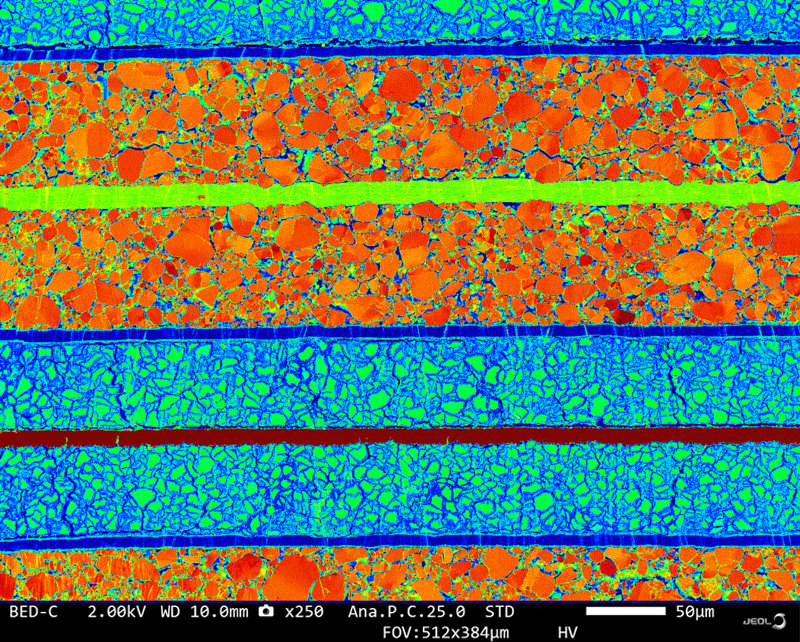


The usage of lithium ion batteries (LIB) ] covers a wide range of applications. From power sources within personal computers and mobile devices to automobiles and even powering entire homes, there is an ever increasing demand for better performance and safety. In order to meet these new performance and quality metrics, JEOL offers unique solutions for analysis and evaluation using its own novel techniques and instrumentation.
The basic structure of Lithium Ion Batteries consists of cathode material, separators, anode materials, and electrolyte. The components and materials that are critical to the performance of LIB are extremely sensitive to any exposure to air which poses a significant challenge to current analysis techniques .
JEOL has established an air-isolated workflow that is ideal for air and heat-sensitive samples as found in Lithium Ion Batteries. The sample is transported via a JEOL air-isolated transfer vessel from preparation to imaging and finally chemical analysis. A specimen that has been prepared in an inert gas environment (such as in a glove box) is safely transferred to the designated specimen preparation equipment (broad ion beam polishing equipment, Cryo Cross-section Polisher for SEM), and subsequently into the Scanning Electron Microscope or Transmission Electron Microscope.
Using this technique it is possible to examine morphological (surface) details and compositional characterization of battery materials without any air exposure. The JEOL Cross Section Polisher creates pristine cross sections of the sample so every layer of detail can be examined clearly in the SEM. Ultra-low voltage imaging combined with signal filtering in the SEM allows direct imaging and analysis of battery constituents (anode and cathode) with nanometer resolution.
Lithium is an extremely light metal (atomic number 3), it is extremely hard to detect with traditional energy dispersive spectroscopy (EDS) when Li is bonded to oxygen or any O-related compound (CO3, OH, etc). In response to this challenge, JEOL has developed a Soft X-ray Emission Spectrometer (SXES-LR), a special detector that can detect Li with chemical state resolution.
Designing Better Batteries Through Innovative Microscopy Characterization
Nanoscale Chemical Characterization of Solid-State Microbattery
JEOL LIB Note Lithium Ion Battery Applications Note
An Outlook on Lithium Ion Battery Technology
Air-Isolated Sampling of Solid-State Battery for TEM
Handle with care – preparing sensitive samples
Designing Better Batteries Through Innovative Microscopy Characterization
A Sneak Peek Inside Tomorrow's Lithium-Ion Batteries